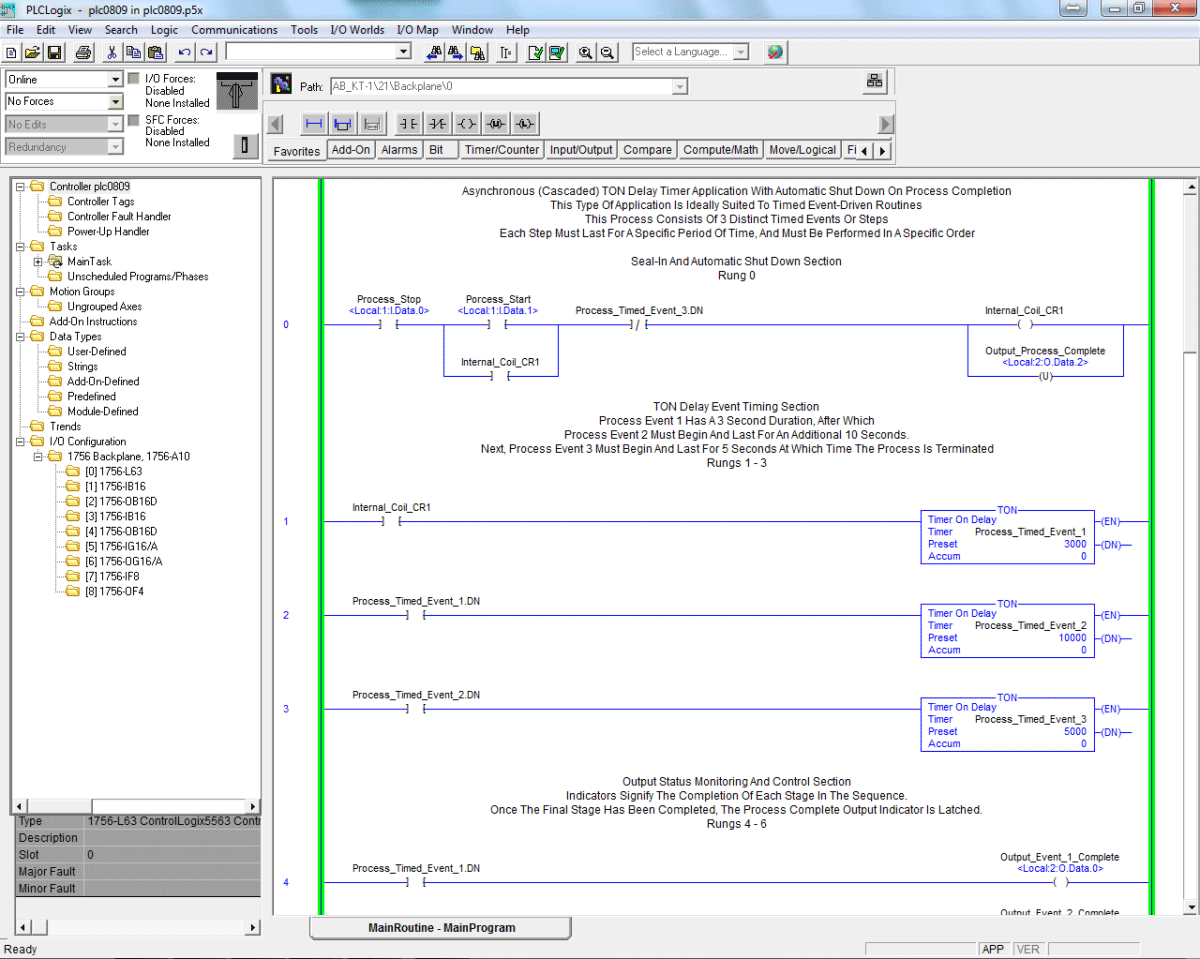Intro to Writing a PLC Program in 4 Simple Steps
PLC is short for “programmable logic controller.” It’s essentially a digital computer commonly used in industrial electro mechanical processes for automation. This includes controls for systems such as amusement park rides, lighting and assembly lines.
Writing a PLC program
When it comes to writing a PLC program, there are a variety of methods. A common one is ladder logic, which involves a set of course of action to use in PLCs. These actions play a significant role in control systems and in updating outdated circuits. A useful way to remember them is to picture them as the blueprints for the program’s foundation.
The ‘frills’ can always be added on after once one has a firm understanding of how they work. These ladders have become more complex with the rise of automation and are often used in conjunction with other tools and computers to find the best method to complete a task.

Although writing a PLC program is a highly technical process, it can be understood in four simple steps:
Step 1. The machines operate in cycles, which are in turn a series of lines of code and sequences. You will want to define the sequences prior to writing any code in order to and plan of how to proceed.
Step 2. You will want to use the programming ladder to begin building the program. If you are unsure of what to do next, the best thing that you can is to conduct further research to increase efficiencies in your workflow. You will want to include added instructions and function blocks in order to make sure the machines are set for the long term.
Step 3. The controls and functions of a machine will vary according to the task it will carry out, but each cycle will require the ability to start, pause, and stop. Work on the sequences in easily managed sizes and then figure out what the trigger of each sequence will be.
Step 4. By the time it is completed, the sequences must be readable and with a clear operation sequence. They must be in order as well, with the top being the start and gradually working down with the bottom being the end of the program logic.
Also, make sure that your code isn't scattered, because that will only cause more issues for everyone involved in the long run. The program should also always return itself to its initial state so that it can run again if necessary.
Needless to say, there’s a lot more to know when . It can be a complicated language to learn, but a very important one once you begin to master it. Properly-written code and a well laid-out process is the best way to ensure that every issue which arises can be solved. This is one of the most important notes for any stage of the cycle.
Modes
Another terminology to be familiar with are modes. There are primarily two kinds of modes, automatic and step. Automatic runs more continuously while the machine is working, while step modes refer to functions that need to be triggered by an order (think sequential order); this often means pushing a button.
PLC Industry Trends
Since there’s a growing demand for automation, PLC skills are highly sought after by a number of different industries. This shouldn't be a surprise to anyone since in everyday life, from self-checkout stations at the grocery store to large machines used in manufacturing and production. Because of these trends, educators are responding to this industrial shift with more post-secondary institutions for a world of automation.
Post a Comment
Post a Comment